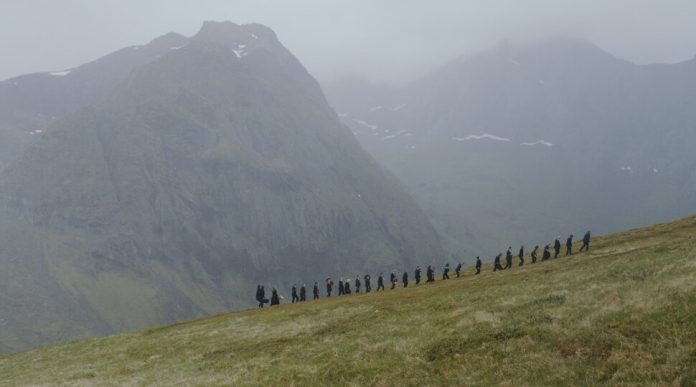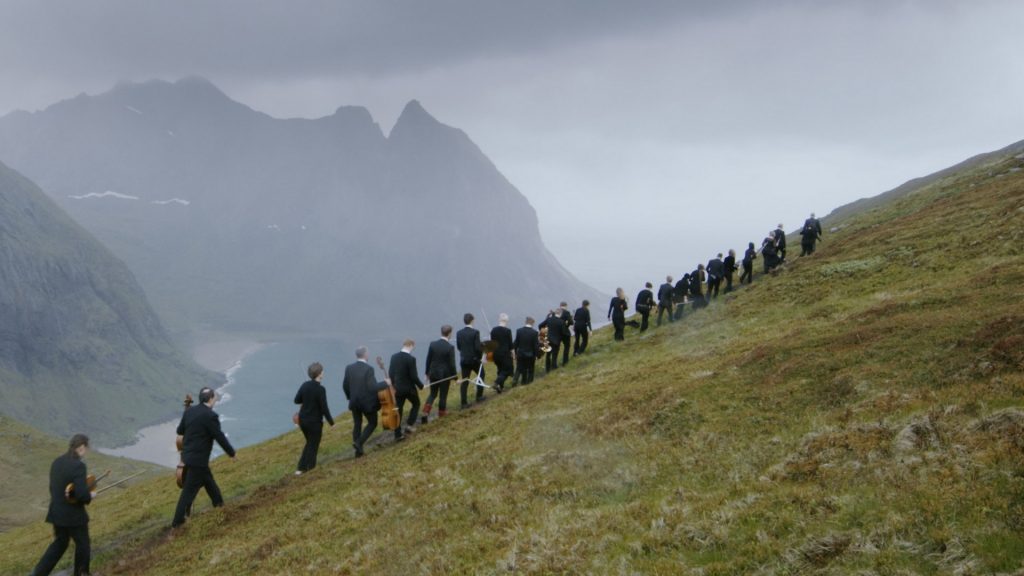(THIS ARTICLE IS MACHINE TRANSLATED by Google from Norwegian)
The starting point for Jan Vardøen's documentary Descent into the Maelstrom is Edgar Allen Poe's short story with (almost) the same name, set in the ocean off Lofoten. The filmmaker found out that the American composer Philip Glass composed a piece for this short story in the 80's – a piece that was performed once. [The live recording was almost completely destroyed, and release A Descent into The Maelstrom from 2002 is a live / studio hybrid where instruments were put on in the studio afterwards, ed. Vardøen decided to make a film inspired by the short story with Glass' music, which he received Arctic Philharmonic to perform with as many as 45 musicians (while it was originally written for eight).
[ntsu_youtube url = ”https://youtu.be/–xgAWHnqSg” width = ”520 ″]Magnificent and ambitious
It is more than the increase in the number of musicians who are magnificent and ambitious about this project. Descent into the Maelstrom is not a conventional documentary about the creation of the musical reunion, but a dialogical depiction of nature and the people living and working in Lofoten – where the soundtrack consists entirely of the new performance of Glass' piece, presumably in its entirety. Consequently, the film is also not a retelling of Poe's short story, but the many images of the sea certainly give an impression of the powerful currents that are central to the text.
It is undeniably daring to rely on such big names as Poe and Glass, as it places high demands on the film itself to be able to compare with these enormous forces. And not least because the film's concept is clearly akin to the documentary classic Koyaanisqatsi from 1982, which was also accompanied by music by Phillip Glass. In other words, there are many giants to stand on.
Portrayal of people and nature
Therefore, it is a sensible choice to Descent into the Maelstrom has a quite different rocking rhythm than Koyaanisqatsi. Both films thematize the dichotomy of nature / culture, but by acting on Lofoten, Vardøen's film naturally has a more limited focus, where the depictions of human life and work are placed in a context of the harsh natural conditions in this place.

Descent into the Maelstrom is an impressive film, with many captivating images of nature on land and at sea. Not all images of people have the same poetic impact, and with their frequent alternation of different motifs from different seasons and times of the day, one can assume that the film has been challenging to color correct. Nevertheless, the structure, where the sequences are thematically assembled rather than chronologically, works well.
In combination with Phillip Glass's suggestive, repetitive and intense music, this has resulted in both a powerful and meditative film experience. Descent into the Maelstrom is a film that urges the big minds and must be seen on the big screen.
The film won the award for Best Norwegian Documentary in Bergen (BIFF), and is shown during the Human Film Festival in Oslo in February.



